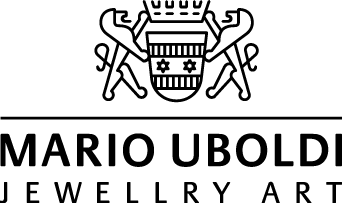Diamonds
A diamond is a crystal completely made of the element carbon, except for trace impurities like boron and nitrogen. The arrangement of the carbon atoms or its crystal structure within the diamond gives it its unique properties. As well as being the hardest known material, it is also the least compressible, and the stiffest material, the best thermal conductor with an extremely low thermal expansion, chemically inert to most acids and alkalis, immensely strong, rigid structure with a very high melting point (3800°C) diamond is the hardest known natural substance.
Every diamond is a miracle of time and place and chance. Like snowflakes, no two are exactly alike. The 4Cs (Cut, Clarity, Carat and Color) of universal diamond assessment was not created until the middle of the twentieth century. Here is what they mean:
Cut - Crystals tend to cleave, or split, along lines called cleavage planes between layers of atoms. Due to its crystal structure, diamond has certain planes of weakness along which it can be split. Diamond is said to have perfect cleavage in four different directions, they cleave cleanly along planes parallel to the faces of an octahedron. This means it will separate neatly along these lines rather than in a jagged or irregular fashion. Diamond cutters take advantage of cleavage to cut diamonds efficiently. The term diamond cut does not refer to the shape of a diamond but the proportions of depth and width and the symmetry of uniformity of its facets. The proportions of width and depth have a large impact on diamond brilliance, the reflection of white light that we see when we look at a diamond. Ideally the diamond is cut so that when light enters the diamond crown it bounces off the pavilion on to the pavilion on the other side and is reflected out of the top the crown again showing brilliance and fire. Shallow cut diamonds loose light out of the bottom of the stone. The lack of light play makes shallow cut diamonds appear lifeless and glassy. Deep cut diamonds allow light to escape from the sides, darkening portions of the stone and loosing brilliance. Symmetry refers to the alignment of a diamond's facets, the flat and polished surfaces. The facets should be cut to achieve the best play of light called scintillation and it occurs when light bounces among the facets. Light doesn't reflect as it should if facets are misaligned. Polish this refers to the quality of the finish given to the diamond. Tiny blemishes or scratches can lower a diamond polish grade.




Clarity is based on the fact that diamonds contain inclusions and the fewer inclusions the finer the clarity and the more valuable the stone.There are basically two categories of inclusions found in natural diamonds. Syngenetic inclusions formed at the same time as the diamond and Epigenetic inclusions formed afterwards. The main types of inclusions are termed Crystal, Clouds, Feathers, Naturals.
1) Crystals are minute crystals of other minerals such as garnet, diopside, spinel, olivine, calcite, iron oxides, silica or even other small diamonds that were absorbed by the diamond crystal as it was still growing.
2) Clouds, a grouping of a number of extremely tiny light crystals called pinpoints that are too small to be distinguishable from one another. The result is that this grouping often looks like a soft transparent cloud inside the diamond which can detract from a diamond's clarity.
3) Naturals refers to the original surface of the rough diamond which has not been polished and left as it is. Naturals are usually left on or near the girdle of the diamond to retain as much of the original weight as possible. Indented naturals are also seen to exist on some stones, where the portion of the natural is seen to dip inside slightly from the diameter of the stone. Here the cutter usually leaves the indented natural either at the girdle or pavilion of the stone, in order to keep it less noticeable. Indents can be removed if the cutter polishes it out however, this would result in a drop of the weight of the diamond.
4) Feathers are a separation within the diamond due to either cleavage or fracture which is often white and feathery in appearance. Small feathers do not usually affect a diamond's durability unless they penetrate the surface on the top of the stone. A feather that breaks through the surface in a vulnerable area increases the risk of breaking the stone.
5) Carbon Spots - are black spots inside a clear diamond. When a diamond is being formed it may not totally crystallize leading to the presence of small dots of black carbon. The effect on the clarity of the diamond depends on the size of the imperfection.
6) Laser lines - are not a natural inclusion. These vapor-like trails are left behind when lasers are used to remove dark inclusions from the diamond. The machine-made trails look like tiny strands of thread that begin at the diamond's surface and stretch inward to the point where the inclusion was removed.

Carat is the weight of a diamond, carat is abbreviated as "ct.". Carat weight is also expressed as "points" to describe diamonds which weigh less than 1ct.
One carat diamond equals 0.2 grams and or 100 points.
1ct = 100 points
3/4 ct = 75 points
1/2 ct = 50 points
1/4 ct = 25 points
Therefore a .50 carat diamond can be called either 50 points or 1/2 of a carat.
Two diamonds of equal weight can be different value depending on their quality.
Color - Diamonds are graded according to their inner body hue using a white to yellow scale, the whiter the diamond the higher the price.
Fancy Colored Diamonds - unlike colorless and near-colorless diamonds which are valued for their lack of color, fancies are valued for the intensity of their color.
Color Treatments - gemologists can influence the color of a diamond through various processes. These processes can often increase the value of diamond that may not be as desirable in its original state. However, all certificated diamonds should state whether or not the diamond in heat treated.
HPHT Treatment stands for high pressure, high temperature treatment. This process is often used to enhance the appearance of a diamond, many times changing its color or making it colorless. This type of treatment is considered permanent, and this type of diamond should be less expensive. If a diamond has received a HPHT treatment, the jeweller should disclose this.
Irradiation/High Heat Treatment - Diamonds of Different Colors. This process involves first exposing the diamond to radiation and then to high heat. Follow-up high heat treatments can continue to alter the coloring.


